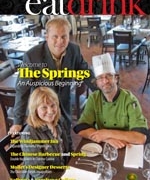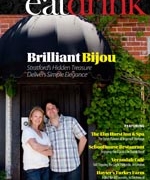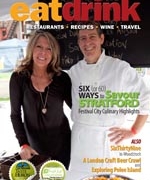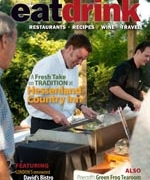Most books about food rely on recipes and cooking, but An Edible History of Humanity by Tom Standage strays from these basic functions and looks at food from a different perspective. Food is important on a personal level at breakfast, lunch, and dinner to sustain us on a daily basis, but this book takes a wider view of food looking at its pivotal role in the collective history of humanity. By asking the central question “Which foods have done the most to shape the modern world?” Standage gives us a crash course in history, politics, geography, social change, and economics.
The foods highlighted in the book include basic items: corn, wheat, spices, potatoes, sugar, and rice. These foods act as the impetus for Standage’s commentary on critical events that have impacted civilization as we know it, such as the role of sugar plantations in the history of slavery and how expensive spices in far-off lands lead to global exploration and commerce. Hunting and foraging may have been the first natural method of feeding ourselves, but farming allowed for the settlement of certain peoples, the establishment of societies, and the opportunity for cultures to specialize in crop production. There are many theories as to why farming started out in the first place, the most interesting being that “it has been suggested that the accidental fermentation of cereal grains, and the resulting discovery of beer, provided the incentive for the adoption of farming, in order to guarantee a regular supply.” But regardless of the main reason, food production is a primary occupation of humanity, currently employing 41 percent of the human race in the farming industry, with farmland covering 40 percent of world’s surface. Also looking into the future of farming, Standage teaches us about the Svalbard Global Seed Vault hidden away on a remote Norwegian island, which has the storage capacity of housing two billion seeds as backup to the world’s plants. The vault preserves as many diverse seeds as possible to propagate any species that become extinct through dire circumstances of man-made or natural catastrophes.
“A farmer creates useful things that do not occur in nature. This is done using plants and animals that have been modified, or domesticated, so that they better suit human purposes. They are human creations, carefully crafted tools that are used to produce food in novel forms, and in far greater quantities than would occur naturally.” Farming may seem like a natural process, but it really comes down to human manipulation of seeds, plants, and animals to be produced in bulk. Genetic engineering may be looked upon negatively today, but it is only the latest technological trend in agricultural history that dates back more than ten thousand years, because all farmers have modified crops in some way. Pictures in Standage’s book indicate that modern corn, for example, does not even resemble the natural maize from which it originated.
With the larger quantities available from farming, came the idea to import and export foods (such as corn from the Americas and rice from Asia) to other parts of the world through commerce and colonialism, resulting in the ultimate sharing of local delicacies around the world. The food most sought after in exploration were spices of all sorts, often written about by Columbus as having as great a value as gold and precious stones. Spices had a great allure of decadence and privilege, often mythologized with magical powers, even listed as a preventative measure against The Black Plague. Dutch explorers garnered huge profits in the spice trade to help boost the national wealth and usher in the “golden age” in Holland in the 17th Century. But it was shortly after this that spices seemed to become more prevalent and more affordable, losing some of their lustre as luxury items. “Today most people walk past the spice in the supermarket, arrayed on shelves in small glass bottles, without a second thought. In some ways it is a sorry end to a once-mighty trade that reshaped the world.”
The book also makes reference to many “food fights,” not so much like the airborne cafeteria warfare in the tradition of Animal House, but rather the fight for survival during the Irish potato famine and the role food plays in military battles, such as starving armies into defeat by cutting off food supplies or destroying natural food sources. “We are used to thinking of food as something that brings people together, either literally around the table at a social gathering, or metaphorically through a shared regional or cultural cuisine. But food can also divide and separate. In the ancient world, food was wealth, and control of food was power.” At certain points in history having access to food translated into wealth and power, and food has even been used as currency in certain countries. Money is still referred to as bread or dough echoing back to food’s association with wealth. Sometimes its correlation with power led to unfortunate results, such as the failure of collective food initiatives in Communist countries and how the Soviet Union collapse in 1991 was largely due to the country’s inability to feed its people.
“Food’s historical influence can be seen all around us, and not just in the kitchen, at the dining table, or in the supermarket,” writes Standage. “That food has been such an important ingredient in human affairs might seem strange, but it would be far more surprising if it had not: after all, everything that every person has ever done, throughout history, has literally been fuelled by food”






